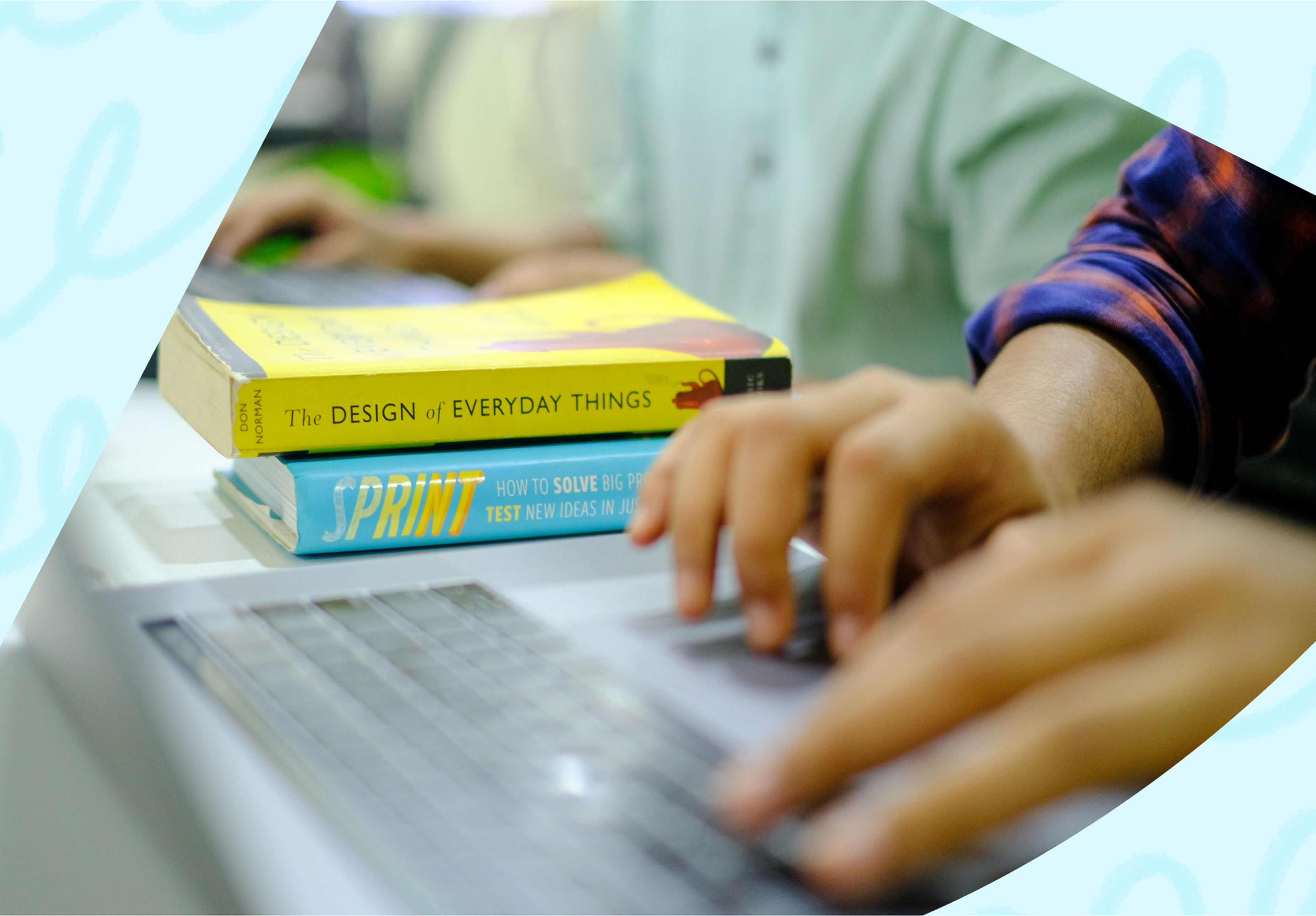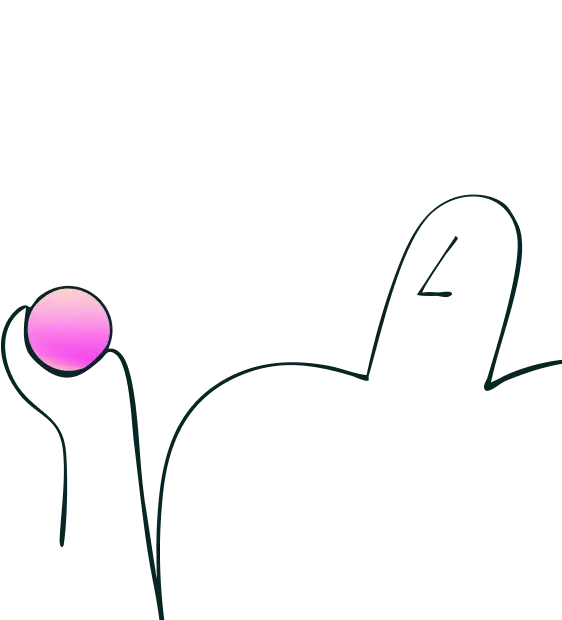14 May 2025
|15 min
UX research books
Discover the 15 must-read UX research books recommended by the Lyssna community to design better user experiences and gain a deeper understanding of your users.

Whether you go back to the foundational basics or keep up-to-date with the latest developments in the industry, continuously improving your UX research knowledge and expertise is crucial to enhancing and advancing your product.
By utilizing the appropriate resources, you can apply better concepts of UX research, design better user experiences, and understand users better.
With this in mind, we asked the Lyssna community to share their recommendations for UX research books that are a must-read to succeed in this space.
The 15 UX research books to add to your reading list
Whether you’re starting in UX research or looking to refresh your knowledge, we’ve compiled a list of 15 highly recommended books. These will help you build a solid foundation in user-centered design and research methodologies, as well as provide you with an invaluable resource for gaining insights into UX research and exploring other approaches to designing for your product.
1. Don’t Make Me Think, Revisited: A Common Sense Approach to Web Usability, 3rd Edition| Steve Krug
In the latest edition of his best-selling book, Don't Make Me Think, usability expert Steve Krug offers a fresh perspective on the fundamentals of web and mobile design in terms of user-friendly navigation and information design. Krug's years of expertise as a usability consultant make his take on intuitive design principles far more authentic.
Don’t Make Me Think, Revisited, is now updated with new examples and principles, plus a section on mobile usability. However, as articulated by the author, “the basic principles are the same even if the landscape has changed because usability is about people and how they understand and use things, not about technology. And while technology often changes quickly, people change very slowly.”
Recommended by Endia Spencer, Freelance UX Designer, because “it gives you a deep understanding of UX design.”
“Usability is about people and how they understand and use things, not about the technology” - Steve Krug
Published 2013 | Buy this book
2. The Design of Everyday Things | Don Norman
As one of the most recommended books by our Lyssna panel, Don Norman’s book is a must-read for anyone with UX in their job title.
The Design of Everyday Things focuses on the role of design as a means of communication between the user and the object, providing insights on how to enhance this connection to ensure an enjoyable user experience. One of the key takeaways from reading this book is that users shouldn’t be held responsible when things malfunction – the fault often lies with inadequate intuitive guidance within the design itself.
Lyssna panelist, Bunyamin Kidir, recommended this book as it “broadened my horizon in terms of the design of everyday objects and human beings' perception. It is a valuable book for understanding the importance of user experience”.
“It's an accessible, informative primer on design principles and why they matter.” - Molly Hillstrom, UX Consultant.
Published 2013 | Buy this book
3. Just Enough Research | Erika Hall
Recommended by Python Certified Developer, Prapula Madala, Just Enough Research is “a nice introduction to different methods of user research, from the basics to process, competitive research, evaluative research, etc. She also added a chapter on surveys in the second edition.”
Prapula continues, “like most A Book Apart books, a lot of information is packed in this one. You will want to keep it close to your desk for future reference.”
Just Enough Research offers practical methods that can be easily implemented by teams of any size and budget. For example, you’ll find valuable insights on identifying competitive advantages, recognizing blind spots and biases, interpreting and utilizing research findings, and the pitfalls of using focus groups. After reading this guidebook, you’ll be able to quickly master effective research techniques and start conducting quality research without delay.
2013 | Buy this book
4. The User Experience Team of One: A Research and Design Survival Guide | Leah Buley
Leah Buley's book, The User Experience Team of One, provides readers with valuable tools and insights, equipping them to do more with less while succeeding in UX endeavors.
Prapula Madala also found this book to have great insights: “the book is split into two parts: philosophy (building principles, attitude, perspective) and practice (methods, techniques, tips, and tricks). The first part concentrates on helping you sell UX to the company. The second one presents different UX methods and tools to help you build user-centric products. Both parts are equally useful depending on where you work and where you are in your career.”
2013 | Buy this book
5. Inclusive Design for a Digital World: Designing with Accessibility in Mind | Regine Gilbert
This book highlights the importance of designing digital products to be accessible to as many different users as possible. A user experience design professor, Regine Gilbert covers a wide range of accessibility issues faced by people with disabilities and provides step-by-step solutions for creating inclusive designs.
Senior UX Designer of Expedia Group, Dani Perez, recommended this book. “It's the last book I've read and we had her in a workshop recently at work. I pick this one because every designer should always have an inclusive mindset when working on a digital product; solving problems for all users without exceptions will make the experience richer, stronger, and timeless,” he shared.
The book addresses the Web Content Accessibility Guidelines (WCAG) 2.1 requirements, emerging technologies like VR and AR, best practices for web development, and more. The author stresses by prioritizing accessibility and usability, designers can ensure that their digital products are inclusive and accessible to all.
2019 | Buy this book
6. Measuring the User Experience: Collecting, Analyzing, and Presenting Usability Metrics | Thomas Tullis and William Albert
According to UX Researcher Prince Seyram, Measuring the User Experience “explains in-depth about quantifying the user experience. Various innovative metrics are discussed in this book. It also presents the best form of ideas on collecting, analyzing and presenting the data.”
This book has proved to be an essential resource for usability and user experience professionals wanting to make a business case to stakeholders based on quantitative analysis.
In this second edition release, Tullis and Albert provide new material on how recent technologies have made it easier and more effective to collect a broader range of data about the user experience.
The book emphasizes the need for UX and web professionals to use solid, reliable data to justify their design decisions. It covers new metrics such as emotional engagement, personas, keystroke analysis, and net promoter score, as well as examining how new technologies from neuro-marketing and online market research can refine user experience measurement.
2013 | Buy this book
Your go-to user research platform
The best teams use Lyssna so they can deeply understand their audience and move in the right direction — faster.
7. Sprint: How to Solve Big Problems and Test New Ideas in Just Five Days | Jake Knapp
This book is your practical guide for answering critical business questions, helping the reader use UX research and structure it in a real work setting.
Author Jake Knapp created a five-day design sprint process during his time at Google, which has since been used successfully by companies in various sectors, including mobile, e-commerce, finance, and healthcare.
According to Eric Ries, author of The Lean Startup, “Sprint offers a transformative formula for testing ideas that works whether you’re at a startup or a large organization. Within five days, you’ll move from idea to prototype to decision, saving you and your team countless hours and countless dollars. A must read for entrepreneurs of all stripes."
2016 | Buy this book
8. Speculative Everything: Design, Fiction, and Social Dreaming | Anthony Dunne and Fiona Raby
Brandon King, founder of the company Home Security Heroes, has been educating himself about UX research to help him communicate with UX designers on how to design for security. He found Speculative Everything a must-read.
“The book challenges readers to think more creatively about the role of design in shaping the future. Speculative Everything offers a broader perspective on design as a tool for exploring and addressing complex social and technological issues, including cybersecurity-related ones, making it a helpful resource for cybersecurity professionals studying UX research,” he shared.
The authors, Anthony Dunne and Fiona Raby, propose a different kind of design in their book – one that serves as a tool to generate not only things but ideas. Dunne and Raby draw on their own experiences in design and teaching, as well as examples from fields such as fine art, architecture, cinema, and photography.
2013 | Buy this book
9. The Elements of User Experience: User-Centered Design for the Web | Jesse James Garrett
“My favorite book about UX design and research is The Elements of User Experience by Jesse James Garrett. It's the book that literally got me into the profession so long ago,” shared Co-founder and CEO of Aurelius, Zach Naylor.
“I love it because it lays out a very clear framework and language for describing all the separate parts of an experience, as well as the tactics on how to create them. Ranging from usability to information architecture, interaction design and visual aesthetics – it clearly provides a framework to think about and communicate creating an awesome user experience.”
The Elements of User Experience provides a simple and clear guide to user-centered design for the web. Instead of focusing on specific tools or techniques, the book emphasizes key concepts with vivid illustrations.
This makes it a valuable read when creating a successful user experience.
2002 | Buy this book
10. User Experience Revolution | Paul Boag
User Experience Revolution is geared toward those who are enthusiastic about user experience but work for companies that require an extra nudge in the same direction.
“The book gives you step-by-step instructions on how to build a UX revolution and make users the center of your business, from understanding it and justifying its benefits to advocating for users, setting benchmarks, and more,” shared Mocca Bajao, Digital PR Specialist.
“If you are new to UX or want to expand your knowledge about UX, this book is a must-read.”
2017 | Buy this book
11. Think Like a UX Researcher: How to Observe Users, Influence Design and Shape Business Strategy | David Travis and Philip Hodgson
Think Like a UX Researcher aims to challenge preconceptions about UX research and encourage readers to explore beyond the obvious. This book provides the tools needed to plan and conduct UX research, analyze data, inspire teams to take action, and carve out a fulfilling career in UX.
The authors offer a range of thought-provoking ideas, exercises, scenarios, practical advice, and real-life examples to help readers become seasoned researchers. With these tools, you can tailor your research methods to fit the unique needs and challenges of your organization.
2019 | Buy this book
12. Observing the User Experience: A Practitioner’s Guide to User Research | Elizabeth Goodman, Mike Kuniavsky, and Andrea Moed
Observing the User Experience is described as bridging the gap between “what digital companies think they know about their users and the actual user experience.”
This book is divided into three parts and covers a wide range of topics related to end-user research and its role in creating useful, desirable, and successful products.
Part one explores the benefits of user research and its place in product development. Part two provides techniques for gaining insight into people's needs, desires, and abilities. Finally, part three delves into the communication and application of research findings, offering guidance on how to sell companies on the value of user-centered design and how it can boost efficiency and profitability.
2012 | Buy this book
13. Interviewing Users: How to Uncover Compelling Insights | Steve Portigal
This book is a classic and recommended reading for anyone who talks to users. It takes you through the do’s and don’ts of interviewing users, sharing specific interviewing techniques and tools that will change you from an interviewer that gathers data into someone who “ uncovers powerful insights about people.”
2013 | Buy this book
14. Lean UX: Designing Great Products With Agile Teams | Josh Seiden and Jeff Gothelf
Antonio Taylor, a web developer at Teki Design Group, recommended Lean UX as it “gives a deep dive into UX design and focuses on outcomes rather than output.”
This practical guide will help you discover that the heart of UX design is the user experience, not the deliverables. By prioritizing the needs of the user over documentation, a deeper understanding is gained of how to apply lean design practices and principles. These methods have been refined through the experiences of numerous successful startup companies, and based on the Lean Startup methodology developed by Eric Ries.
By applying these principles, you'll be able to improve the quality and productivity of your teams, and ultimately create products that deliver exceptional user experiences. Whether you're a UX designer, developer, or part of a startup company, this guide will equip you with the tools and strategies needed to succeed in today's competitive market.
“Lean UX is a book that changed how software is made forever… for the better. By showing product companies how to design with their customers and continuously improving as customers grow and change, Lean UX has enabled a new generation of products that not only look good but are good.” Christina Wodtke, Lecturer, Stanford Computer Science Department, and author of Radical Focus.
2013 | Buy this book
15. 100 Things Every Designer Needs to Know About People | Susan Weinschenk
Conversion rate optimization consultant Oliver Palmer recommended this last book as it “offers insights drawn from psychology that designers can use to make their work more effective and user-friendly.”
“A few examples include the power of storytelling to engage users emotionally, the significance of color psychology in influencing user behavior, and how understanding users' mental models can lead to more intuitive design interactions.”
“I love how this book takes impenetrable academic research out of the journals and presents it in a handy and accessible format that designers can apply in their work. It's very dense yet highly accessible, with each of the 100 insights explained simply and concisely.“
2020 | Buy this book
Final words
Continuous learning and refreshing your knowledge of both foundational and contemporary methodologies will benefit and enhance your quality of work. And although having a book to read is wonderful (and with 15 options to now choose from), there are also numerous additional resources available to help you broaden your knowledge. For instance, you can participate in UX community forums such as ResearchOps, read online articles, follow social media accounts, and explore the resource hubs and blogs of UX research businesses like Lyssna.
Elevate your research practice
Join over 320,000+ marketers, designers, researchers, and product leaders who use Lyssna to make data-driven decisions.
You may also like these articles


Try for free today
Join over 320,000+ marketers, designers, researchers, and product leaders who use Lyssna to make data-driven decisions.
No credit card required






